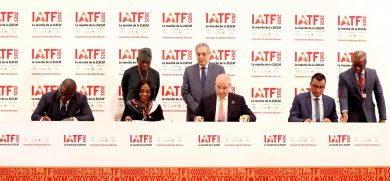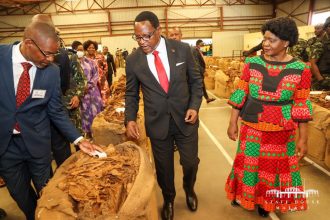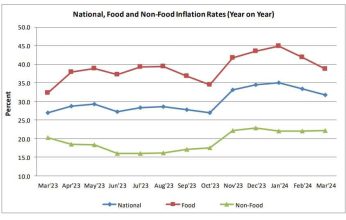Universal fertiliser subsidy expensive for Malawi
An analysis by the International Food Policy Research Institute (Ifpri) on the universal fertiliser subsidy (UFS) has revealed that untargeted programme would put pressure on the budget and its benefits disproportionally distributed to beneficiaries.
The analysis assumes that the demand for fertiliser is relatively responsive to its price.

In his published op-ed Ifpri leader of the Malawi Country Strategy Support Programme Bob Baulch observed that UFS would be expensive budgetary proposition, involve significant opportunity costs in terms of foregone agricultural investments, and have benefits that would flow disproportionately to better-off farmers.
By looking at the volume of commercial fertiliser purchased in recent years—along with the additional commercial fertiliser that would be purchased if there were no Farm Input Subsidy Programme (Fisp)— among other assumptions, Baulch said excluding administration costs and leakages, a 50 percent subsidy would cost between K 32.1 billion and K 39.5 billion for the 2019/20 Financial Year.
This compares to a cost of K 26.8 billion for fertiliser costs alone under Fisp in the 2017/18 Financial Year and a total allocation cost, including seeds and administration cost, of K38.5 billion.
With UFS at 75 percent which is close to the level of fertiliser subsidy paid by Fisp this year, this comes to K48.1 to K81.3 billion per year, exceeding the total annual agricultural development budget.
“And if the UFS resulted in fertiliser prices in Malawi that were significantly lower than in neighboring countries, the cost could be even higher than this due to unofficial fertiliser exports. Despite the decline in the number of Fisp beneficiaries in recent years [from 1.5 million households before 2016/18 to 900 000, and then back to 1 million this year], expenditure on the Fisp still represents over a quarter of Malawi’s agricultural budget.
“Once recurrent expenditures plus maize purchases are accounted for, very little remains for other agricultural investments. So, an important additional question that needs to be asked is which types of agricultural investments will provide the biggest kick for your kwacha [or, in the case of donors, ‘bang for your buck’?” wondered Baulch.
He observes that a move to a UFS would, therefore, be likely to concentrate fertiliser use among the richer, but also more productive, farmers who can afford to purchase fertiliser.
Over the past 15 years, Fisp, a programme that was designed to ease access to farm inputs, has dominated the agriculture and food security discourse in Malawi.
Since the dawn of multiparty democracy in 1994, access to food has been the central feature of almost all the political contestations and as a matter of fact, all governments elected in the multiparty era after 1994 have been elected based on their promise to guarantee food security to the electorate.
Critics of the Fisp programme have pushed for an exit strategy and noted that the country is entangled in various cycle with billions of kwacha invested in Fisp and, at the end of the day, taxpayers fishing out more to feed millions of hungry mouth after the poor harvest.





